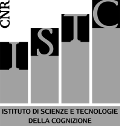A decoy is an irrelevant option that, when added to a binary choice, is not selected but nonetheless alters the subjects' preferences, systematically biasing towards its target. The decoy effect, also known as attraction effect, is considered an anomaly of rational decision-making, albeit its applicability to real-life choices outside of laboratory settings has been challenged. In particular, when decoys have been studied in choices between outcomes occurring at different points in time, i.e. intertemporal choices, or with different probabilities of realizing their utility, i.e. probabilistic choices, results were mixed: sometimes decoys are impactful, sometimes they are not, and they seem to be more effective in biasing towards, respectively, larger-and-later and larger-and-riskier outcomes, rather than towards sooner-and-smaller or sooner-and-safer rewards. We suggest that this puzzling set of results can be clarified by focusing on two important influencing factors: time pressure and immediacy/certainty. Moreover, we argue that decoy effects constitute an excellent testbed to assess similarities and differences between intertemporal choice and risky decision-making, which constitutes another open issue in the study of human choice. Two studies are presented to support these claims. In Study 1 (N = 92), we demonstrate that asymmetrically dominated decoys influence both intertemporal choice and risky decision-making only in the absence of time pressure, since otherwise the comparative process required for the decoy to have an impact cannot occur, consistently with predictions made by connectionist models of decision. In Study 2 (N = 53), we show that, when the smaller option is no longer presented as immediate/certain (but rather as sooner/safer), the impact of decoys becomes symmetrical - that is, they can prompt subjects to become either more future-oriented/risk-prone or more present-oriented/risk-averse. We conclude by discussing the implications of these findings for our understanding of the multifaceted role of time and chance in decision making.
Decoy effects in intertemporal and probabilistic choices the role of time pressure, immediacy, and certainty
Tipo Pubblicazione:
Articolo
Publisher:
Elsevier Science Ireland, Amsterdam , Paesi Bassi
Source:
Behavioural processes (Print) 162 (2019): 130–141. doi:10.1016/j.beproc.2019.03.002
info:cnr-pdr/source/autori:Marini M.; Paglieri F./titolo:Decoy effects in intertemporal and probabilistic choices the role of time pressure, immediacy, and certainty/doi:10.1016/j.beproc.2019.03.002/rivista:Behavioural processes (Print)/anno:2019/pagina_d
Date:
2019
Resource Identifier:
http://www.cnr.it/prodotto/i/414355
https://dx.doi.org/10.1016/j.beproc.2019.03.002
info:doi:10.1016/j.beproc.2019.03.002
http://www.scopus.com/record/display.url?eid=2-s2.0-85062454156&origin=inward
Language:
Eng


